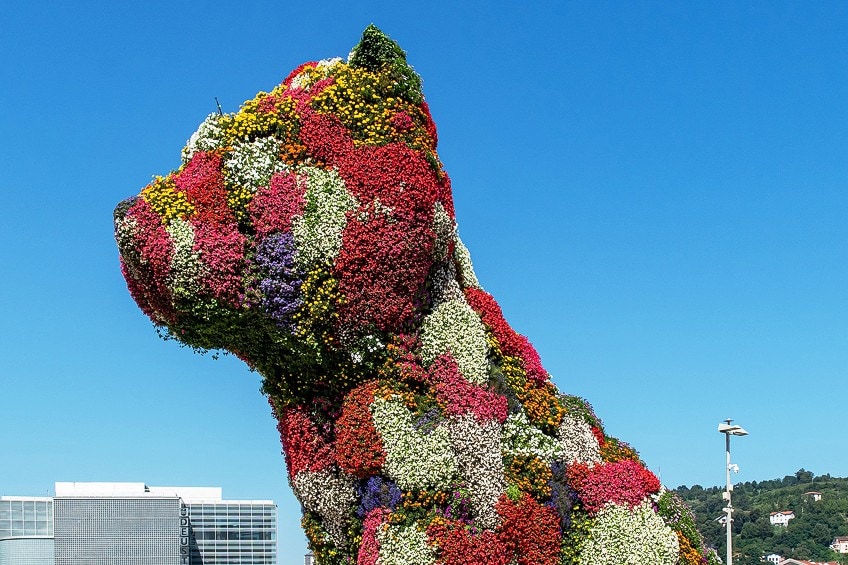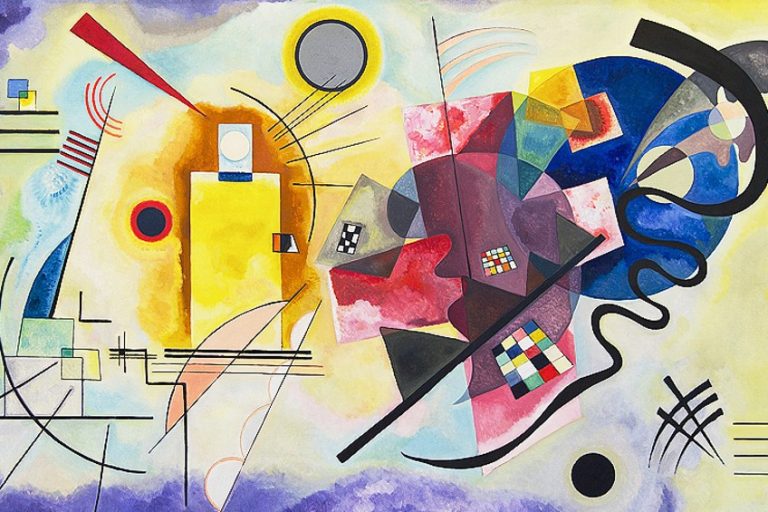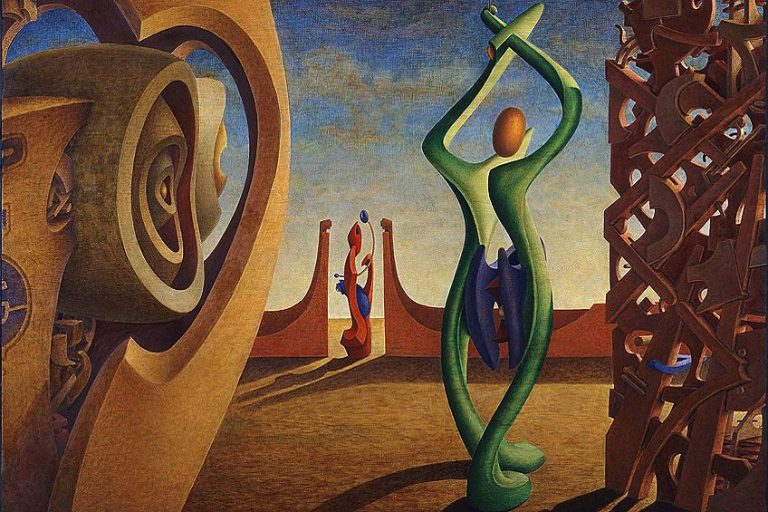Kitsch Art – A Look at Famous Kitsch Paintings and Artworks
Verkitschen, in German, means “to make something cheap”. You may have heard of the phrase “that’s so kitsch” and even witnessed the most famous celebrities walk the red carpet at the Metropolitan Museum of Art’s Met Gala under the theme, “Camp and Kitsch”. This article will cover the different notions of kitsch as seen through the lens of art and various implications of the term.
Table of Contents
Establishing a Kitsch Art Definition
When coming up with a kitsch art definition, you not only have to look at the original German term but you also have to contextualize the term and its usage through the decades. Since the 19th century, the term “kitsch” has faced a back-and-forth on meaning, either being a term used to refer to sentimental art objects or somewhere between a distinct display of “poor taste”.
This article will provide you with all the insight to help you answer, “what is kitsch?” and frame your understanding and application of the term as a concept.
What Is Kitsch?
Kitsch was originally a word used to describe works found in art and design as banal and possessing some level of naivety. The beginning of the 20th century defined kitsch as a term referring to productions within popular culture that showed a lack of depth and thought, and is often compared to works of art or productions made under the umbrella of “fine art”“. On the other hand, kitsch has evolved to include objects or artworks that appear “quirky” or witty but in reference to a well-known image or popular production.
In a general sense, kitsch can be applied to any discipline, including music, literature, and anything that is representative of a kind of “extravagance”.
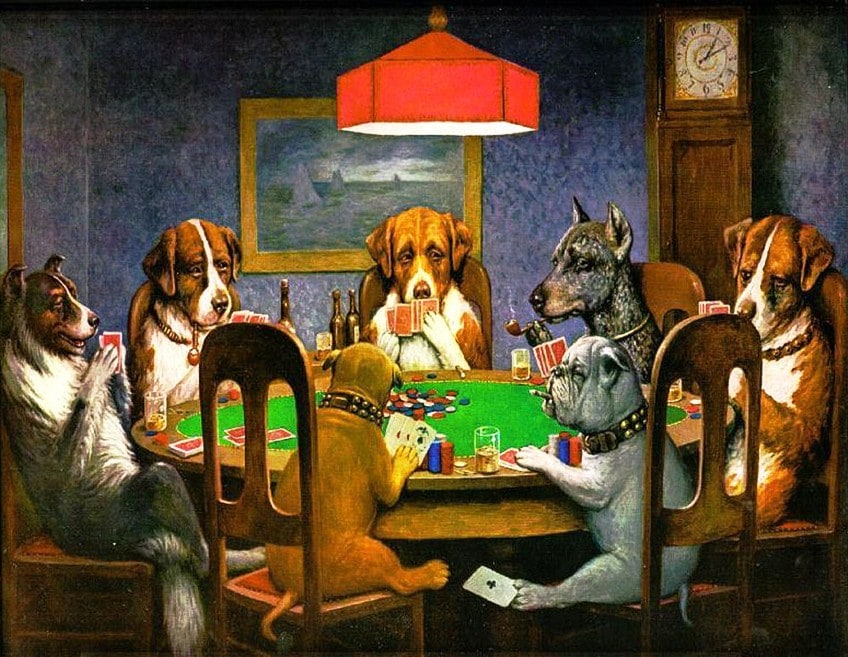
Kitsch in Art: Famous Kitsch Paintings
Kitsch in art can be seen in exactly the same way as the definition, although, with a more critical lens. Some of the most famous imagery in art has fallen into the “trap” of being overproduced and are now regarded as “kitsch art”.
Below are a few examples of famous kitsch paintings and artists you may recognize outside the art realm.
Chinese Girl (1952) by Vladimir Tretchikoff
| Artist | Vladimir Tretchikoff |
| Date | 1952 |
| Medium | Oil on canvas |
| Dimensions (cm) | 76.2 x 66.5 |
| Where It Is Housed | Delaire Graff Estate, Stellenbosch, South Africa |
Even if you are not an art fanatic, you have definitely seen Vladimir Grigoryevich Tretchikoff’s Chinese Girl (1952) featured on merchandise and circulated often in popular culture and social media. Many artists consider their work being called “kitsch” as an insult and rightfully so.
One of the main reasons why this artwork has been socially categorized as kitsch art is due to its mass production in the 20th century.
The fact that the artwork’s imagery has been reproduced so many times in the last decade speaks to the idea of the work having lost its originality to some degree. Not many artworks have received such “mass-production” on this scale as that of Tretchikoff’s Chinese Girl. In an attempt to reproduce what Hermann Broch calls, “a copy of the beautiful”, seemingly “beautiful” art becomes a target for merely aesthetic appreciation and therefore, kitsch art.
This highlights an important aspect of kitsch art, that being, kitsch art as a category, has the potential to catch any artist – even a great master.
Michael Jackson and Bubbles (1988) by Jeff Koons
| Artist | Jeff Koons |
| Date | 1988 |
| Medium | Porcelain |
| Dimensions (cm) | 110 x 179 x 83 |
| Where It Is Housed | The Broad, Los Angeles |
This 1988 sculpture was the pinnacle of controversy due to its depiction of the late Michael Jackson as white and gilded. Recognized as gilded in relation to the celebrity’s fame and much-revered status as God-like by fans, many supporters criticized the sculpture and the way that Jeff Koons represented Jackson.
While many of Koon’s works have received criticism ranging from exceptional talent to basic kitsch art, the remake of a popular celebrity being brought into the fine art sector is what makes this artwork kitsch.
Brooklyn Bridge (1995) by LeRoy Neiman
| Artist | LeRoy Neiman |
| Date | 1995 |
| Medium | Lithograph poster |
| Dimensions (cm) | 48.26 x 87.63 |
| Where It Is Housed | RoGallery, Long Island City |
Another famous artwork by American artist, LeRoy Neiman, considered a “kitsch artist”, is Brooklyn Bridge. The work depicts the popular bridge with a background of the Twin Towers and a traditionally colored sunset, almost as if a depiction of Armageddon. The artist had also engaged with Hugh Hefner in the 1950s while working on a few fashion illustrations for the department chain store, Carson Pirie Scott. The artist later went on to make posters in commemoration of historical sports and cultural events.
Drawing attention to perhaps one of the issues with the associations of categorizing artists and artworks as “kitsch art” is that this opens the doors to a display of “snobbery” by the “educated elite” of fine art.
This is one of the downsides highlighted by the act of distinguishing artists as either located under fine art or kitsch art. Even the great masters painted subjects that can be considered “beautiful” objects, but the difference lies in reproduction and imitation.
Imitation is said to be the highest form of flattery, but it does carry consequences for reputation, as seen through the eyes of those who prefer “high art”.
Sunset On Lamplight Lane (2005) by Thomas Kinkade
| Artist | Thomas Kinkade |
| Date | 2005 |
| Medium | Oil on canvas |
| Dimensions (cm) | 45.7 x 68.5 |
| Where It Is Housed | Not available |
Demonstrating strong pastoral imagery, snow landscapes, saturated colors, and quaint cottages, Sunset On Lamplight Lane is one of the most kitsch paintings to flood public space. Referred to as “mall art”, this artwork by the king of kitsch himself, Thomas Kinkade is considered particularly successful for its use in commercial spaces. Kinkade sold prints of his works to a shopping network and received tons of criticism for it. The artist is well aware of his position, calling himself “the most controversial artist”.
The criticism further reiterates the snobbery of commercial artists and brings us back to the drawing board of art and why artists make art.
For commercial purposes, art sold from a gallery is held in high esteem, whereas art sold to companies for public purposes and exposure is seen in a negative light. Why is this the case? A potential theory is that the art world prefers to separate itself from the “real world”, characterized by capitalism, globalization, and politics.
However, what most art critics fail to acknowledge is that the basis for operation and effective functioning of transactional relations in the art space function almost the same as that of the commercial business world. The only difference is accessibility to “good art”, the prestige of exclusivity associated with it, and the idea that your neighbor down the road will most likely not have the same artwork as yourself.
It was found that at a certain point in Kinkade’s spiral into kitsch, at least one out of every 10 households in the United States owned a Kinkade-referenced item.
Kitsch as a Movement
Kitsch in art can be considered a global movement by a group of artists who decided to follow the philosophy of Norwegian painter, Odd Nerdrum. The painter and his associates aimed to integrate techniques used by the “old masters” with evocative and emotional imagery.
Coupled with an air of romanticism, the kitsch movement is characterized by the art historical narratives of Greece and Rome.

Kitsch art, aside from the negative and positive connotations in society, is a movement that operated independently. Artists who classify themselves as “kitsch painters” view the movement as philosophical as opposed to an artistic movement.
The kitsch movement has also been viewed as the opponent of Contemporary art and as an indirect critique of it.
Critiques of Kitsch
The idea of kitsch has been deliberated for many years and can be seen as an odd occurrence in art. Clement Greenberg, an American art critic, stated in his 1939 essay on Avant Garde and Kitsch that there exists “two polarities of culture”, producing both “high modernist art” represented by a cubist artwork or art as seen through and preferred by the public, the majority, such as pop music.
The distinction made by Greenberg was not far off from the current perception and application of the term kitsch.

The idea of kitsch has also been used in a positive light, referring to products and artworks that are so kitsch, that it is so “good” but only through the lens of contemporary appreciation. It seems as though the kitsch art definition and the concept of kitsch as an expression are subject to terms and conditions.
Gray Area in Kitsch Art
Admired by all, even the spectacular and most expensive artwork in the world, the Mona Lisa (1503) by Leonardo da Vinci has been subject to classification under kitsch art. This presents an almost gray area when thinking about how to distinguish what artwork is kitsch and what is not.
The “Mona Lisa” has been subjected to significant reproduction on merchandise and various products, but not to the extent as that of Tretchikoff’s “Chinese Girl” (1952).
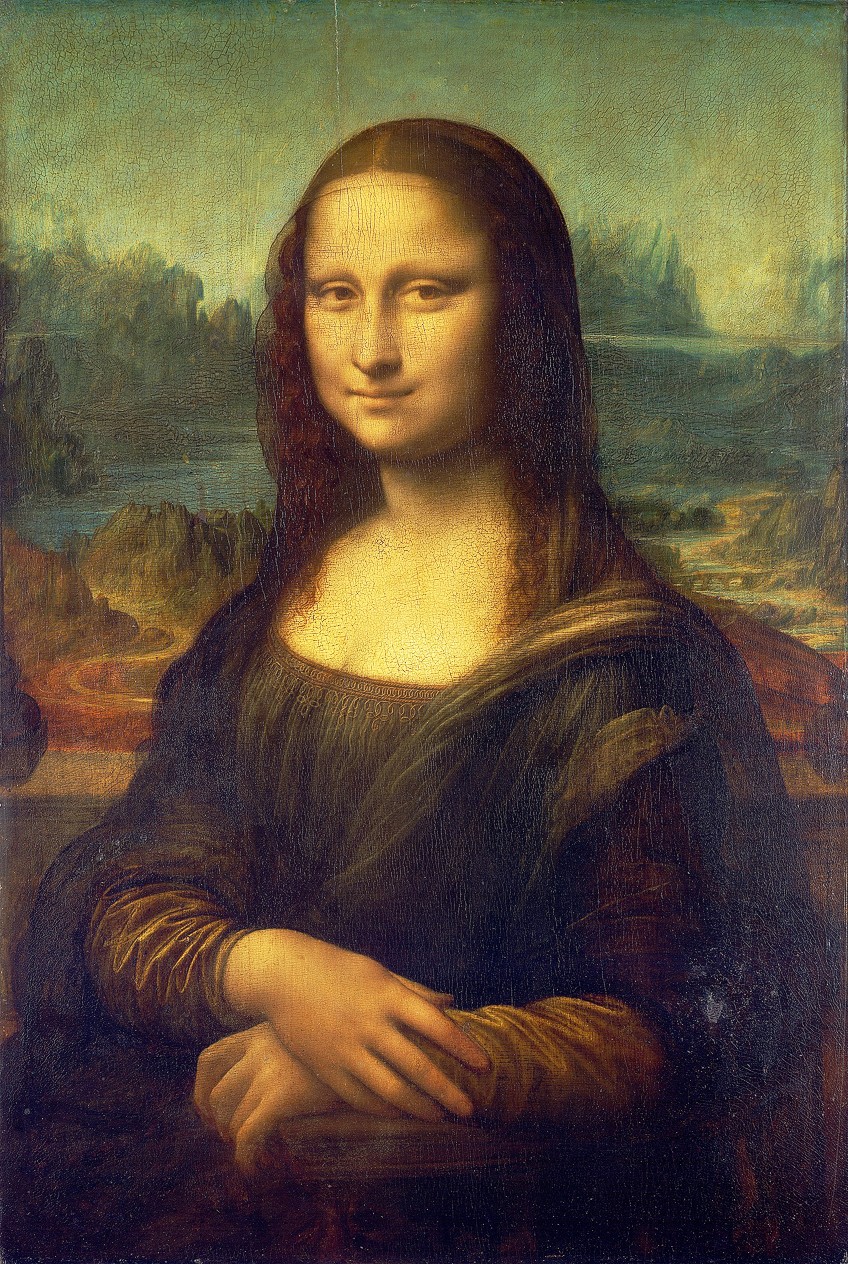
Another point to note is that the Mona Lisa is also “reproduced” in another way, via popular culture but through the opinion that it is a “classic”, “the greatest masterpiece”, a technically “beautiful” painting, and “high-end art”. Loved by all, the Mona Lisa does fall under the gray area of kitsch art.
The late Cy Twombly also referenced the music of Tchaikovsky as being “profound and kitsch” – a remark that adds to the idea of classical pieces falling “victim” to kitsch art.
Kitsch As Totalitarian
Kitsch has also been compared to a totalitarian feeling, having featured in a novel by Milan Kundera in 1984, The Unbearable Lightness of Being, where the Czech writer compares the shame associated with the act of defecation to the idea of kitsch. The writer presents the idea as something that is unacceptable in a way and yet falls into a “categorical agreement” with existence. Kundera deems kitsch as an “aesthetic ideal” with a strong relation to the setting in which the book was produced.
In 1968, the Soviet Union invaded Prague under the guise of Totalitarianism and the spirit of Communism.
The writer uses the example of children running on a field to draw a comparison to kitsch. The feelings incited from envisioning this scenario are first, how wonderful it is to witness children running carefree on the grass.
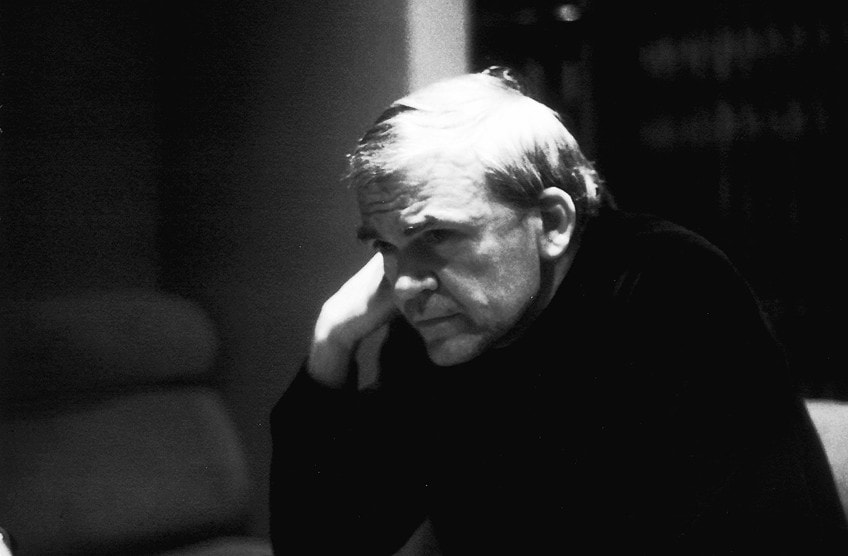
The second feeling associated with the scene is a second-hand sense of how incredible it is to be “moved” collectively by the sight of children running on the field. The writer stressed the importance of the second association, where the feeling evoked is the essence of kitsch – an idealistic view.
This aesthetic view was compared to that of the politics and surrounding movements that made kitsch totalitarian and anything that crosses the borders of what is called kitsch should be obliterated.
This is about acts of individualism, doubt, and deviation. The idea of kitsch as totalitarian was a key moment for the writer and became an act of condemnation for kitsch under various political regimes such as Nazi Germany and the Soviet Union, vehemently referred to by Kundera as a curtain to mask death.
Kitsch As the Mirror
Kitsch art is also said to reflect society’s issues about political, environmental, and social circumstances. The concept of kitsch as a reflection speaks to the subject matter portrayed in kitsch art. As we have previously touched on, the famous examples of kitsch art as seen earlier all display commonly known subjects ranging from celebrities and classical imagery to music and ideal landscapes.
The importance of acknowledging what kitsch reflects is held in the shared interest of the public and can be critiqued further as a reflection of what the masses have been exposed to.
In a book called Kitsch and Art, philosopher Thomas Kulka comments that if artworks were judged through democracy, kitsch as a genre would surely win, despite the many competitors. This raises issues of whose opinion matters – is it up to the masses whom we rely on, or is it up to the art world? Preference is political. Kulka also referred to kitsch as containing elements that evoke “stock emotions”.
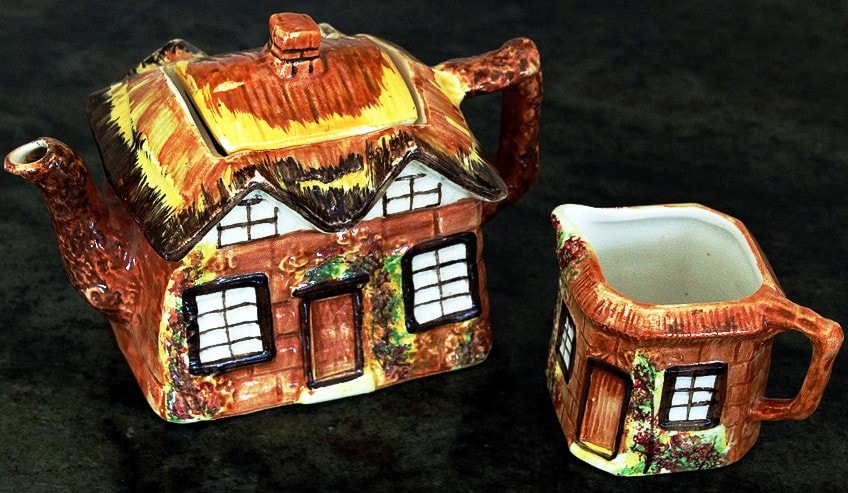
You may understand the term “stock” about stock photography, but the application here applies to emotional response, hence, stock emotions. This also presents the idea that art can be made for everyone. A statement born of inclusivity and the rebellion away from an exclusivity complex is often seen in the fine art sphere.
Also called “relatable art”, kitsch art introduces an open dialogue for all to engage in the discourse beyond art for art’s sake.
According to Greenberg, kitsch art features “universal themes” such as love, childhood, and family, all of which in Kulka’s words are “effortlessly identifiable” themes. Kitsch art also reflects accessibility and marriage of the gap between the upper-class wealth and the middle-class citizen. Like the work of Kinkade that was mass-produced into mugs and lithographs, kitsch art formed a daily part of life in many households, thus expanding the reach of art in general to those who would have otherwise been excluded from the fine arts appreciation complex.
Although not held in high esteem by many critics, kitsch art has opened the door to many questions surrounding the ideals of the fine art sphere. Other artists such as Andy Warhol, Margaret Keane, Yoshimoto Nara, and Damien Hirst have also been recognized as artists whose works can be considered kitsch. Given the many “effects” of kitsch on the art sphere, popular culture, and music, what is your stance?
Frequently Asked Questions
What Is the Difference between Kitsch Art and Avant-Garde Art?
Kitsch art is defined by the appearance of art or designs that denote a sense of generic, common, and mass-produced quality, and is often characterized by artworks and artists whose work has moved beyond the confines of the fine art sphere and into the broader network of commercial enterprises, popular culture, and media. Avant Garde art is art classified under the movement that is in opposition to mainstream culture. Avant Garde art can be understood as possessing a political edge and is a rejection of cultural trends by the masses.
What Examples Are There of Kitsch in Art?
Examples of kitsch in art feature work by famous artists such as Bob Ross, Andy Warhol, Jeff Koons, Vladimir Tretchikoff, Thomas Kinkade, Margaret Keane, LeRoy Neiman, Damien Hirst, and many others.
What Makes an Artwork Kitsch?
What makes artwork kitsch is its proof of reproduction and reference in popular culture and mass media. Artwork is also considered kitsch if it visually represents some form of societal ideal or subject commonly known to the public in a direct manner. Kitsch in artwork can be seen as artwork that is recognizable and seen as so-called good art by all. As stated by art critics, kitsch in art is considered a consolation to the public and a simplistic commodity of popular culture.
Where Else Can Kitsch Be Found?
Kitsch goes beyond its reference to the arts. Kitsch can also be seen about fashion and divided into cultural segments. Some examples of where kitsch is found lie in Indian kitsch designs on posters and in fashion, a style held in appreciation for its seemingly ugly appearance and with a sense of irony.
Why Is Kitsch Seen As Derogatory?
Kitsch is commonly referenced in a derogatory manner to refer to imagery and artists whose work appears mass produced and therefore denotative of a lesser quality than that of high art. Kitsch is seen as a form of urgent gratification for the public and criticized for its effect of devaluing art classified as fine art. A double role is served by kitsch in art as being undervalued in the face of fine art, yet devaluing towards the nature of fine art.
What Are Some Famous Kitsch Paintings?
Famous kitsch paintings include the Mona Lisa (1503) by Leonardo da Vinci, The Song of the Lark (1903) by Sophie Gengembre Anderson, A Friend in Need (1903) by Cassius Marcellus Coolidge, and the Return of the Sun (1985) by Odd Nerdrum.
Isabella studied at the University of Cape Town in South Africa and graduated with a Bachelor of Arts majoring in English Literature & Language and Psychology. Throughout her undergraduate years, she took Art History as an additional subject and absolutely loved it. Building on from her art history knowledge that began in high school, art has always been a particular area of fascination for her. From learning about artworks previously unknown to her, or sharpening her existing understanding of specific works, the ability to continue learning within this interesting sphere excites her greatly.
Her focal points of interest in art history encompass profiling specific artists and art movements, as it is these areas where she is able to really dig deep into the rich narrative of the art world. Additionally, she particularly enjoys exploring the different artistic styles of the 20th century, as well as the important impact that female artists have had on the development of art history.
Learn more about Isabella Meyer and the Art in Context Team.
Cite this Article
Isabella, Meyer, “Kitsch Art – A Look at Famous Kitsch Paintings and Artworks.” Art in Context. August 5, 2022. URL: https://artincontext.org/kitsch-art/
Meyer, I. (2022, 5 August). Kitsch Art – A Look at Famous Kitsch Paintings and Artworks. Art in Context. https://artincontext.org/kitsch-art/
Meyer, Isabella. “Kitsch Art – A Look at Famous Kitsch Paintings and Artworks.” Art in Context, August 5, 2022. https://artincontext.org/kitsch-art/.


